A history of Statkraft’s Rheidol Hydropower Scheme
To mark sixty years since the official opening in 1964, Statkraft invited back former staff involved in its construction and the early years of operations, to share their memories of their time working at Rheidol
Hydropower for Aberystwyth?
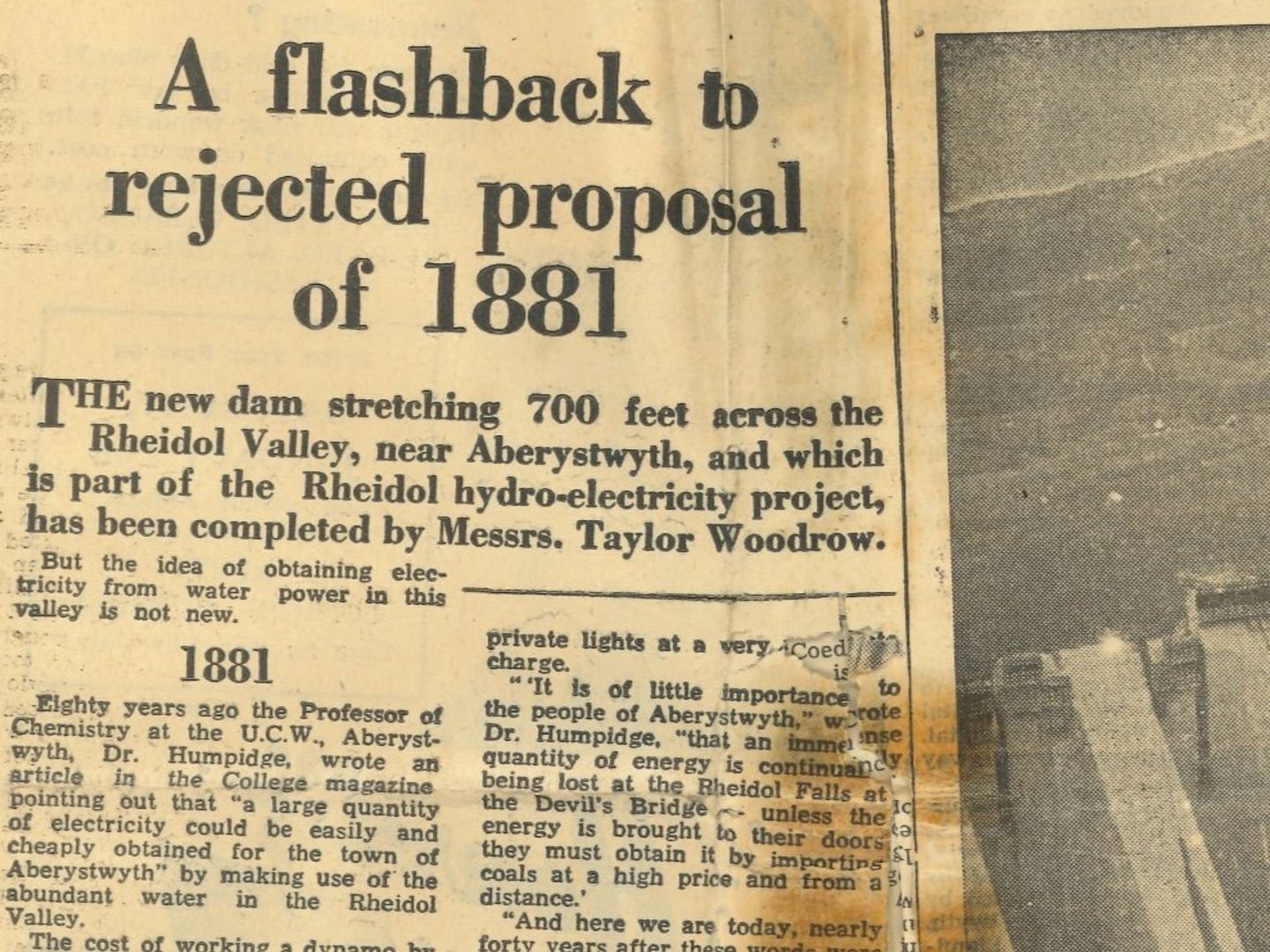
Professor Humpidge, from University College Wales, Aberystwyth argues in an 1881 article that a ‘large quantity of electricity could be easily and cheaply obtained for the town of Aberystwyth’ by making use of the abundant water in the Rheidol Valley. The cost of this would be ‘almost nothing’, he says.
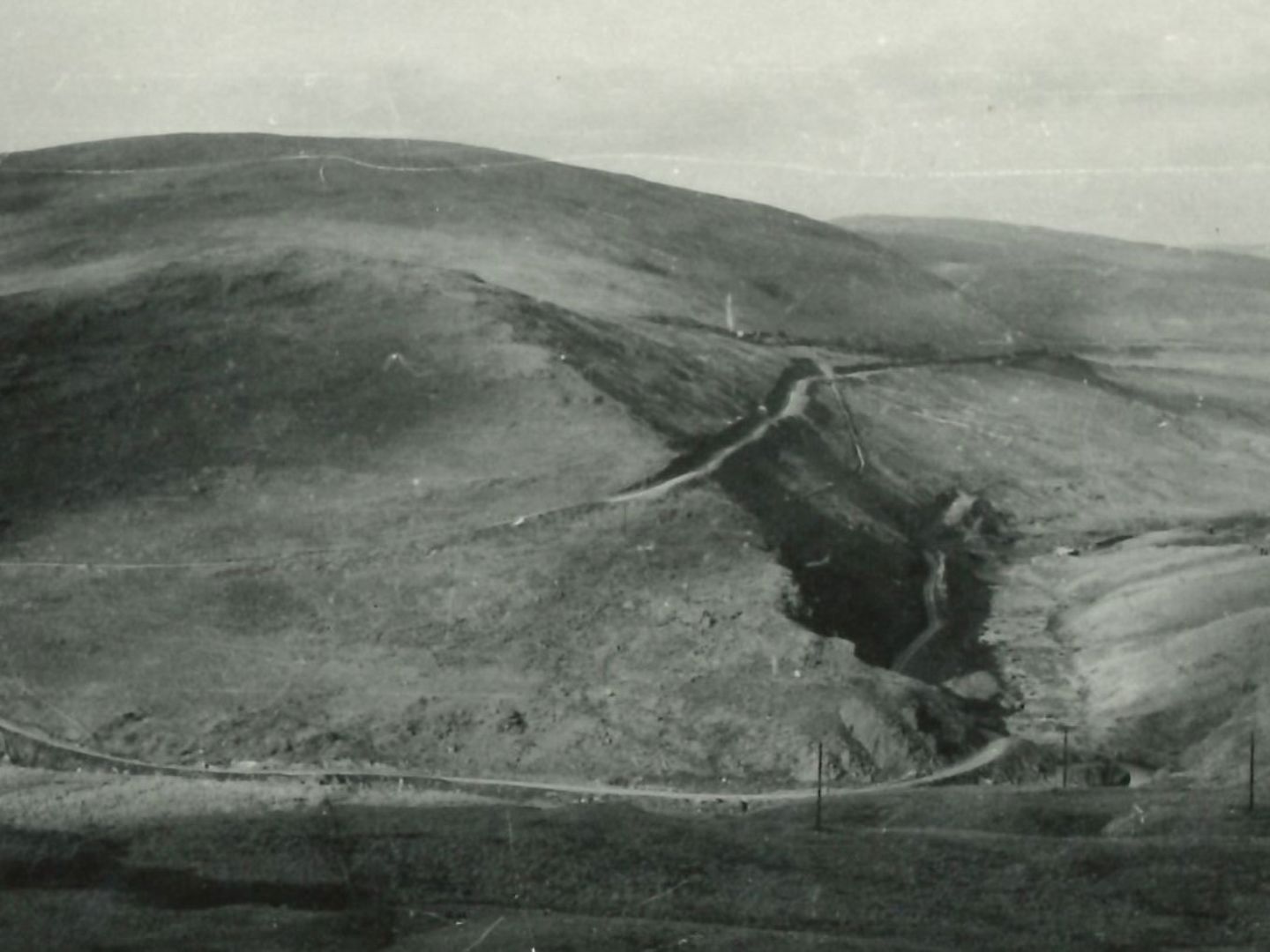
In 1921, an opinion piece in the Cambrian News laments the fact that Aberystwyth was ‘badly advised’ when it rejected a water-powered electricity scheme, for a steam-powered alternative: ‘The town has to suffer today and will have to suffer for years to come for the stupidity of its representatives in the past.’ It will be several decades before the idea is raised again.
Changing the law
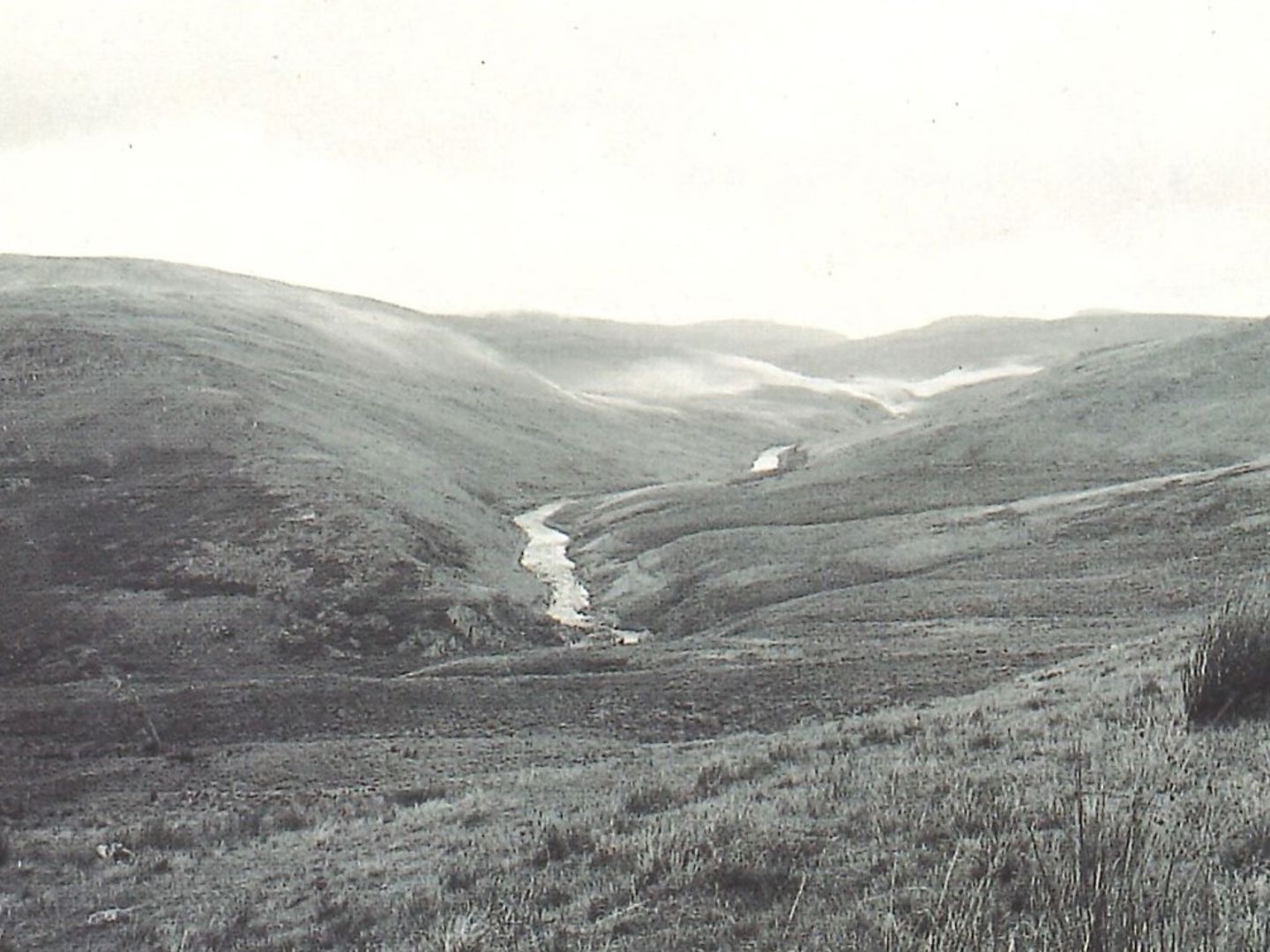
On 1 April 1952, the North Wales Hydro-Electric Power Bill is debated for the first time in the House of Commons. The legislation gives powers to the Central Electricity Authority - which later becomes the Central Electricity Generating Board - for ‘the construction and erection of works and generating stations in the counties of Merioneth, Cardigan, and Montgomery and for the acquisition of lands and easements for the purposes thereof or in connection therewith and for other purposes’.
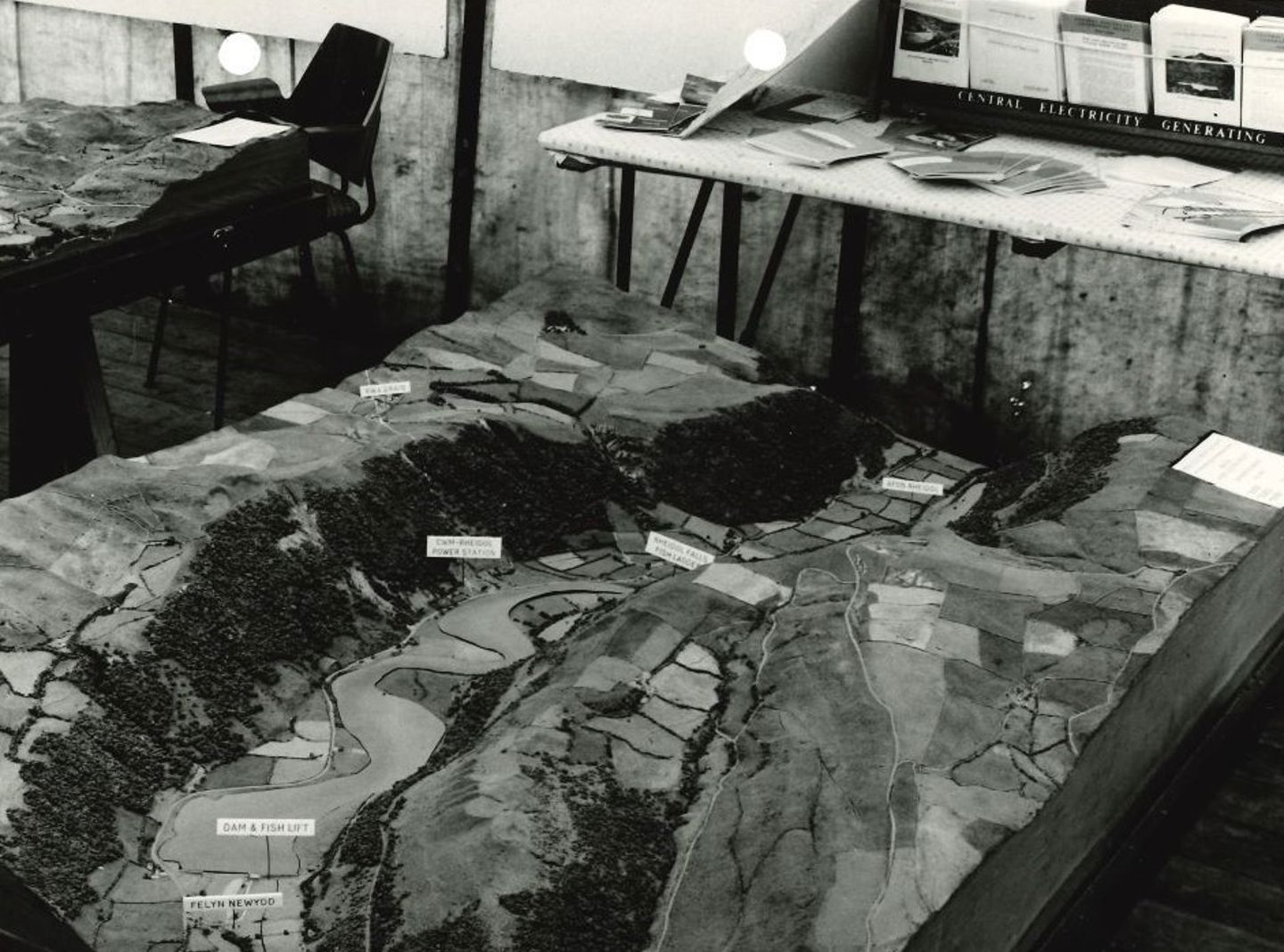
There is some initial opposition in Parliament, with one MP arguing ‘that the Bill in its present form will do irreparable damage to the natural beauty of one of the loveliest parts of Wales’.
Eventually it becomes law on 27 July 1955, and the Act allows the construction of Rheidol, and another hydropower scheme at Ffestiniog, in Gwynedd, north-west Wales to go ahead.
Central Electricity Generating Board: A short history
The Central Electricity Generating Board (CEGB) is responsible for the generation and bulk supply of electricity in England and Wales. It operates the largest power system under single control, anywhere in the world. A central headquarters in London controls five regions, responsible for the operation of power stations and transmission lines in their areas.
The North Western Region, which includes Rheidol, stretches from Aberystwyth to Buxton, and then to Carlisle. The CEGB also has two specialist construction and design divisions, one responsible for new power stations, the other for transmission lines.
Setting out the plans
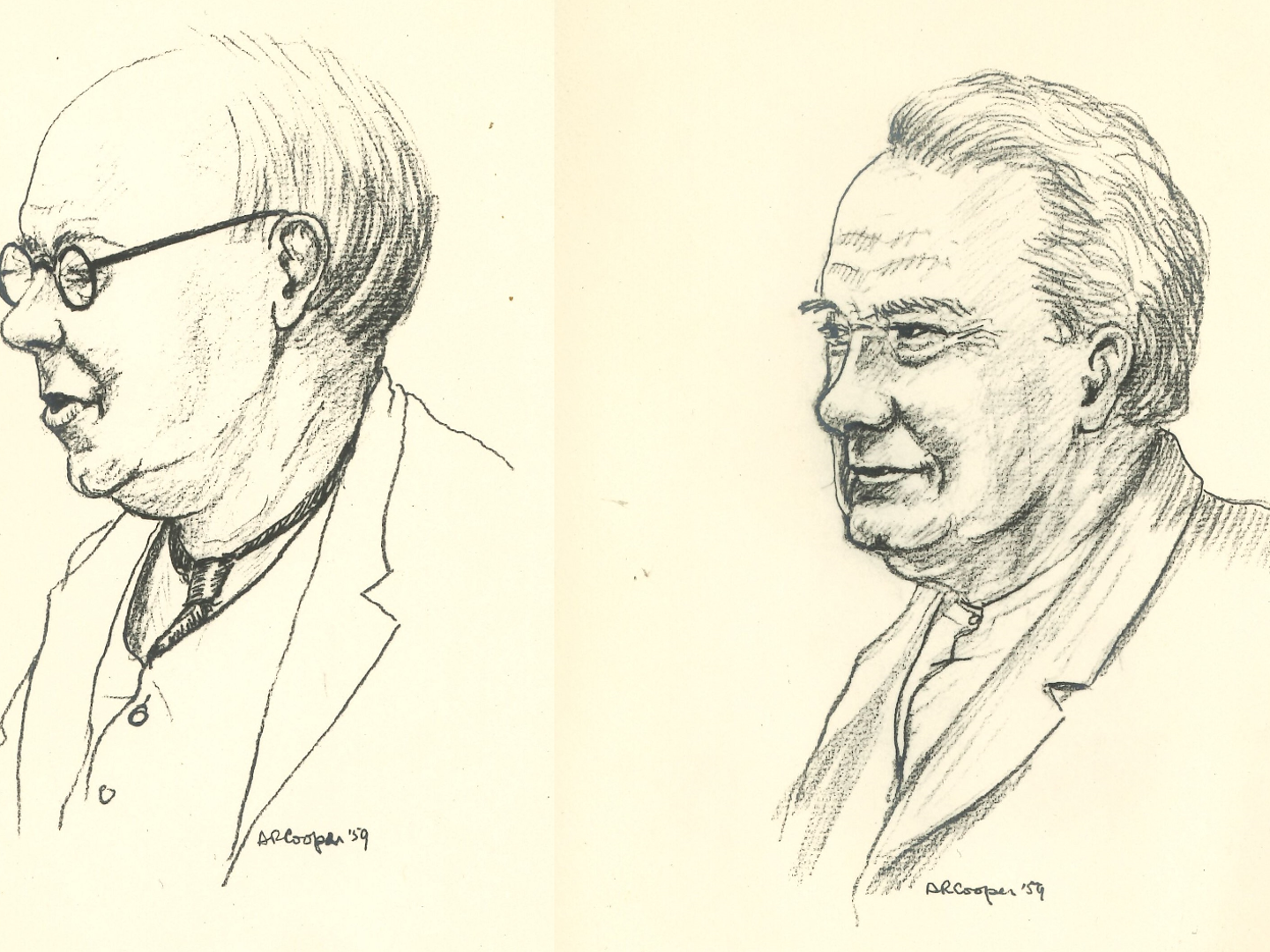
There is some initial opposition locally to the proposed Rheidol Hydro-Electric Scheme, with objectors arguing that it should be located elsewhere. The only two people who are to be relocated as a result of the proposed construction are James James (Jim) and John James, who live in a pink-washed farmhouse at Nant-y-Moch.
‘This farm has been in the James family for more than 100 years’; John later tells a reporter from the Empire News and Sunday Chronicle. ‘It’s mainly sheep and a few cattle, but it’s our way of life’.
Breaking ground

Construction begins in 1957, with over 1,800 men employed in building the Rheidol hydro-electric scheme, at a cost of £10 million pounds. The workers mostly stay in three different camps, with the site’s headquarters located in the village of Ponterwyd.
The last service
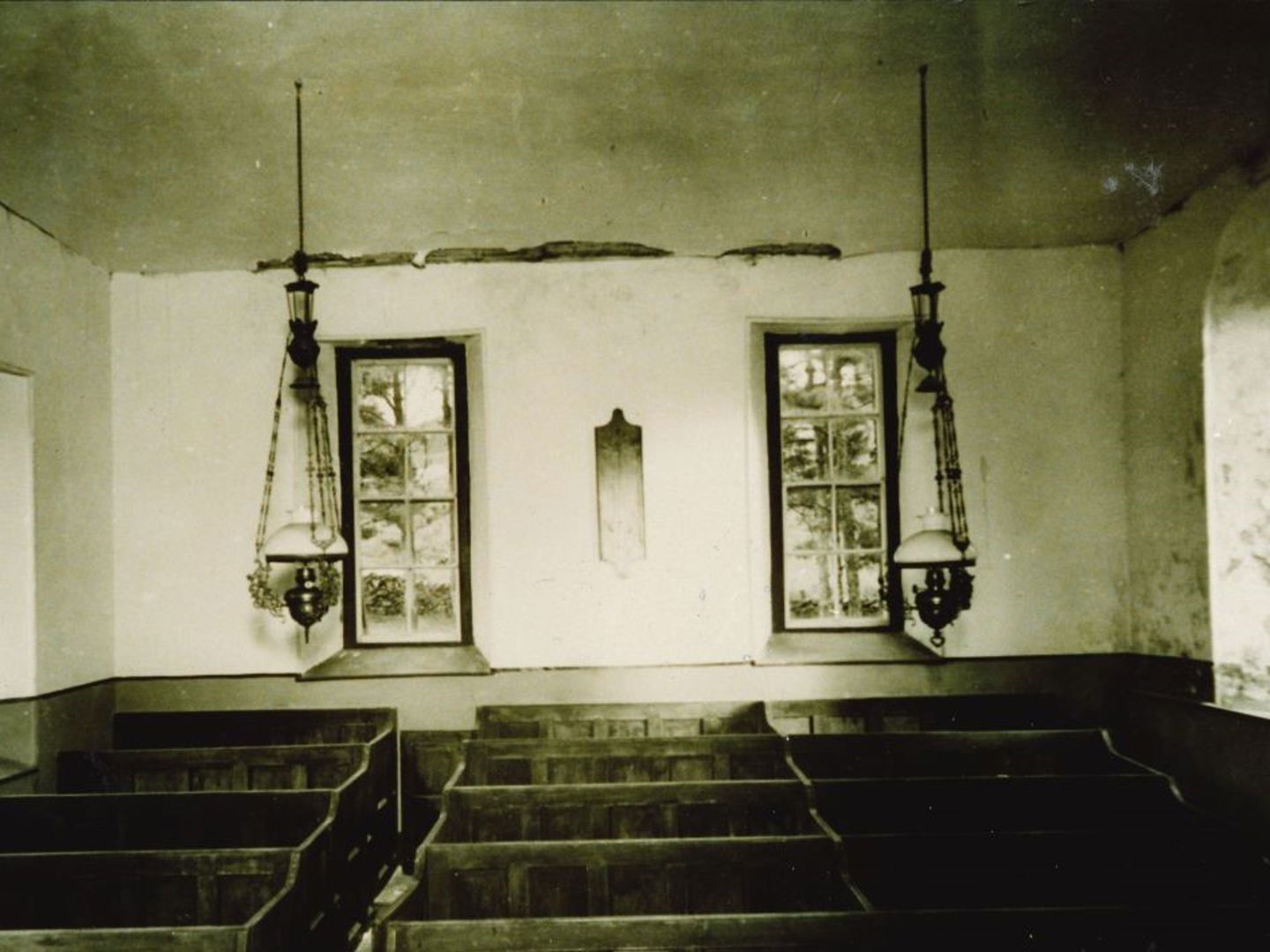
In the shadow of Nant-y-Moch dam, sits Capel Blaen Rheidol, which has been the centre of religious life in the valley since 1865. Once attracting some 50 worshippers to its services, by the end of its life, the congregation dwindles to just five regulars, including the James brothers.
According to one newspaper article in 1961, about the ongoing construction work, ‘now the plaster peels from the walls, and the slates are falling off’.
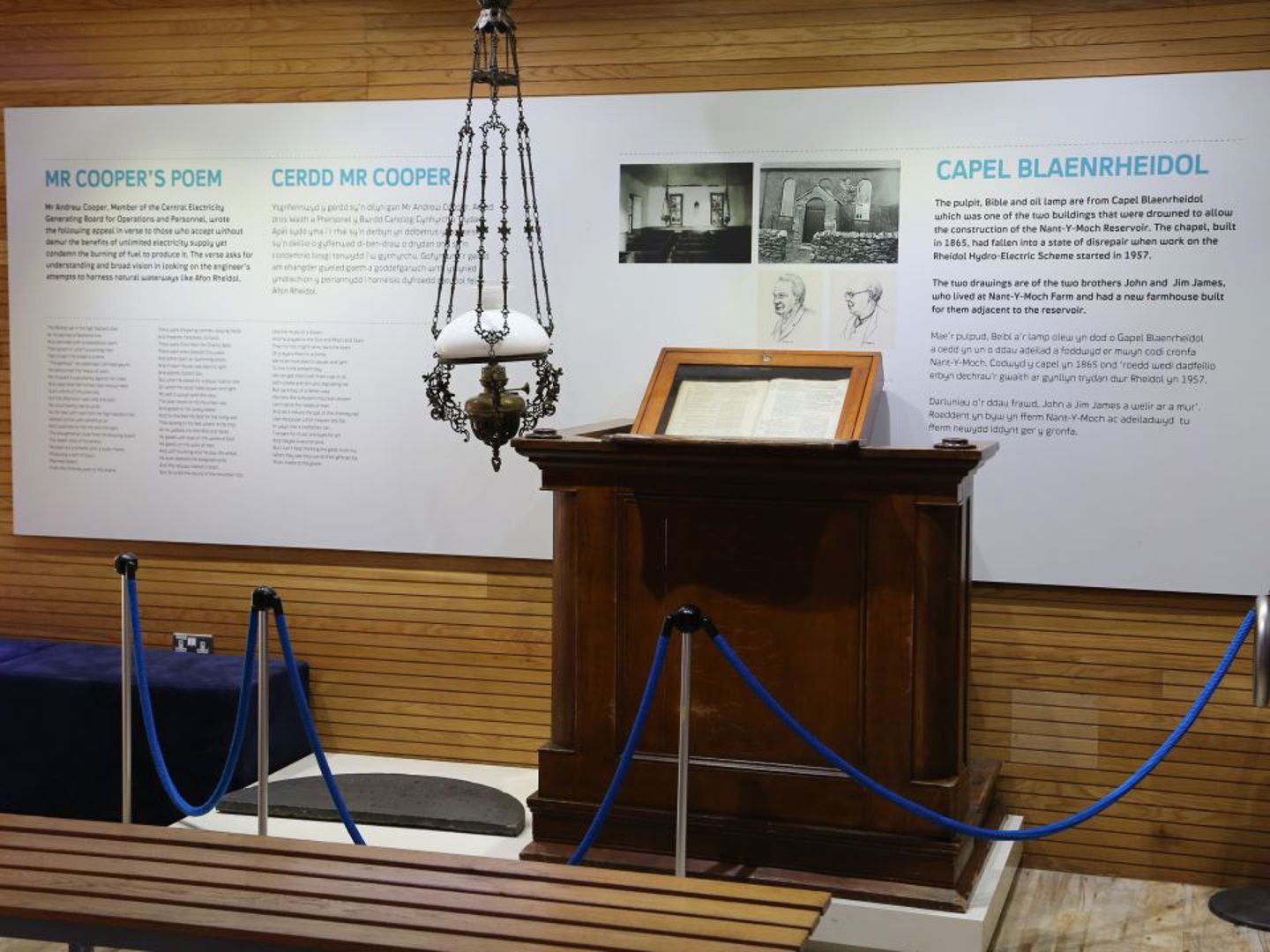
The chapel survives for a number of years while concrete structures of the hydro scheme rise around it, but on June 7 1961, the final service takes place. Five Presbyterian ministers take part in the final service, then 29 graves in the cemetery are relocated shortly after and are re-interred at Ponterwyd Cemetery.
The slate sign from above the entrance to the chapel, its wooden pulpit, a Welsh bible, and one of the two oil lamps that lit the chapel can be seen today in Statkraft’s Rheidol Visitor Centre.
Moving on
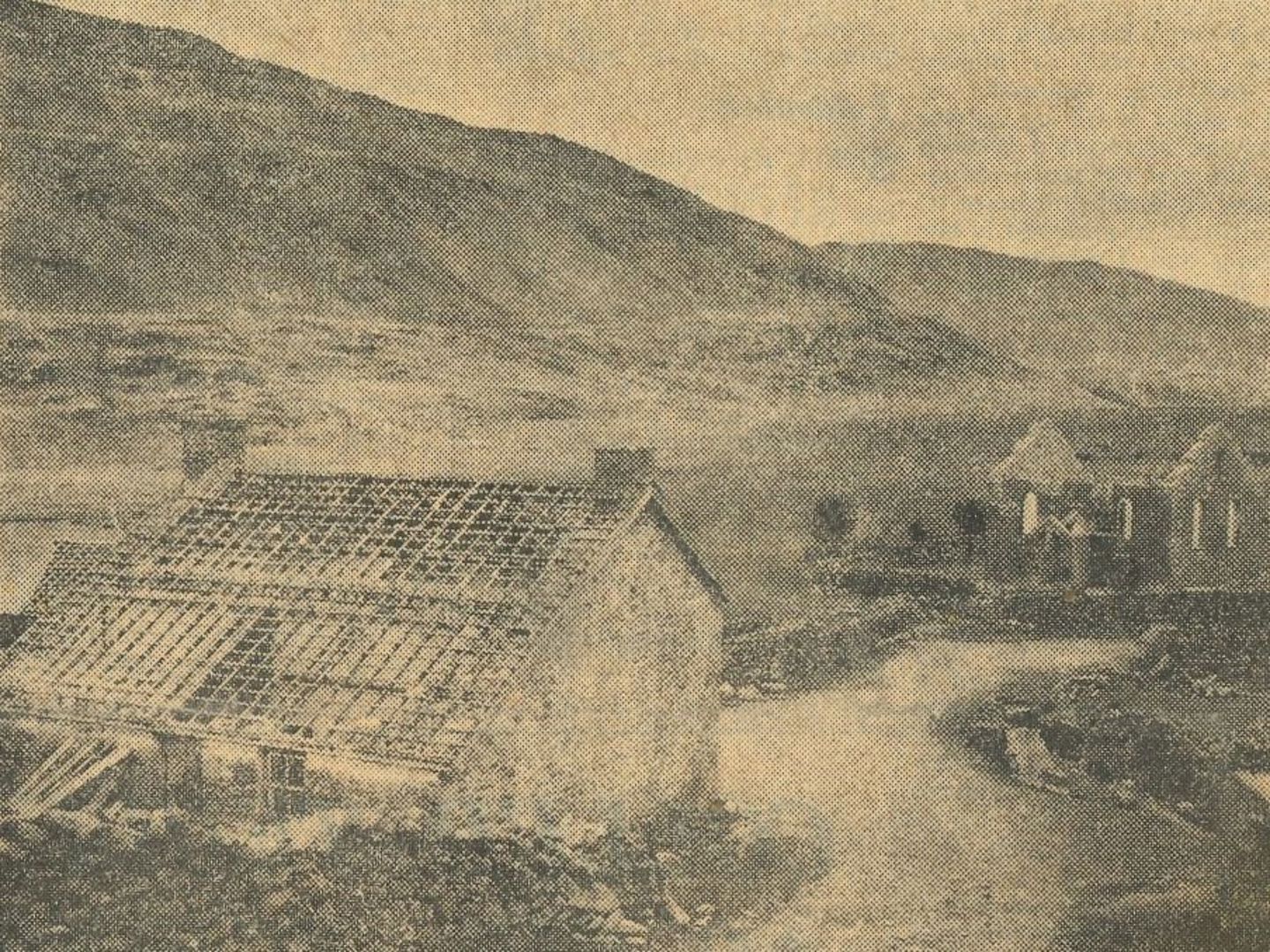
The James brothers spend their last night at the farmhouse in October 1961, where they have lived all their lives, and where their family have farmed the land for over a century. John, who is 82, and James, aged 80, rarely leave their mountain home for the hustle and bustle of nearby Aberystwyth.
With the help of neighbours, they move their few possessions to a house in nearby Capel Dewi and have running water and electricity for the first time. They live happily for the rest of their lives there.
Nant-y-Moch dam
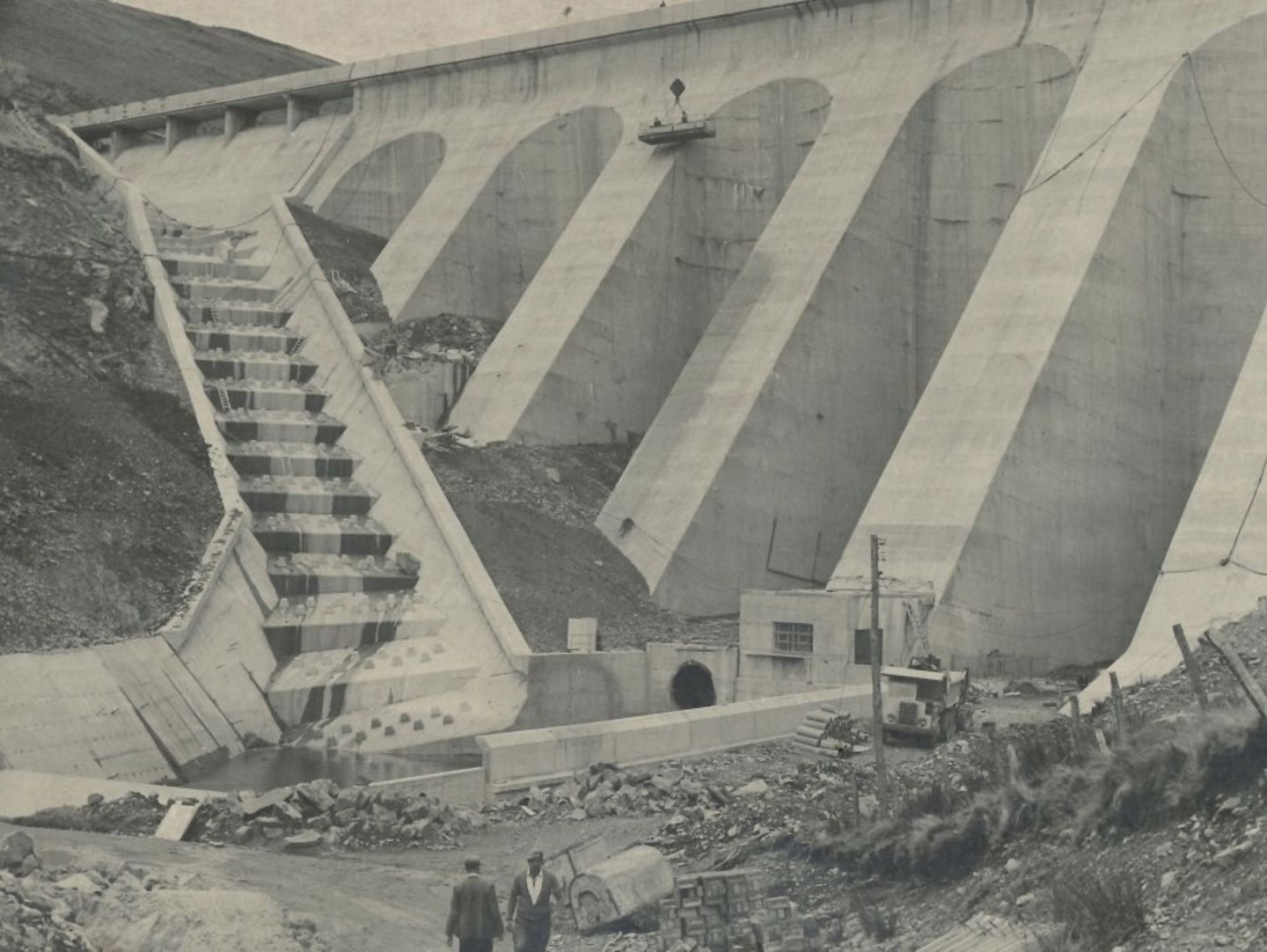
Over 500 men work on its construction, excavating nearly 60,000 cubic metres of soft material, 45,000 cubic metres of rock, and use 152,000 cubic metres of concrete to build it. Next to the dam is a cairn commemorating the 1401 victory of the Welsh leader and soldier Owain Glyndwr against England’s King Henry IV in the Battle of Mynydd Hyddgen.
The dam is built with ten buttresses, each between seven and eight metres thick, with splayed feet for extra strength, on a ridge of rock below where the Rheidol and Camdwr rivers used to meet. The reservoir it contains spans an area of 275 hectares.
Nearing completion

By July 1962, the labour force is down to some 190 men. Most of the villages, hamlets, and farms in the valley and mountains near the scheme benefit in some way from the construction work, whether that is through the new network of roads, bridges, and cattle grids, or through the road built across Nant-y-Moch dam, opening a new scenic route through the Plynlimon mountains for tourists.
Rheidol is open
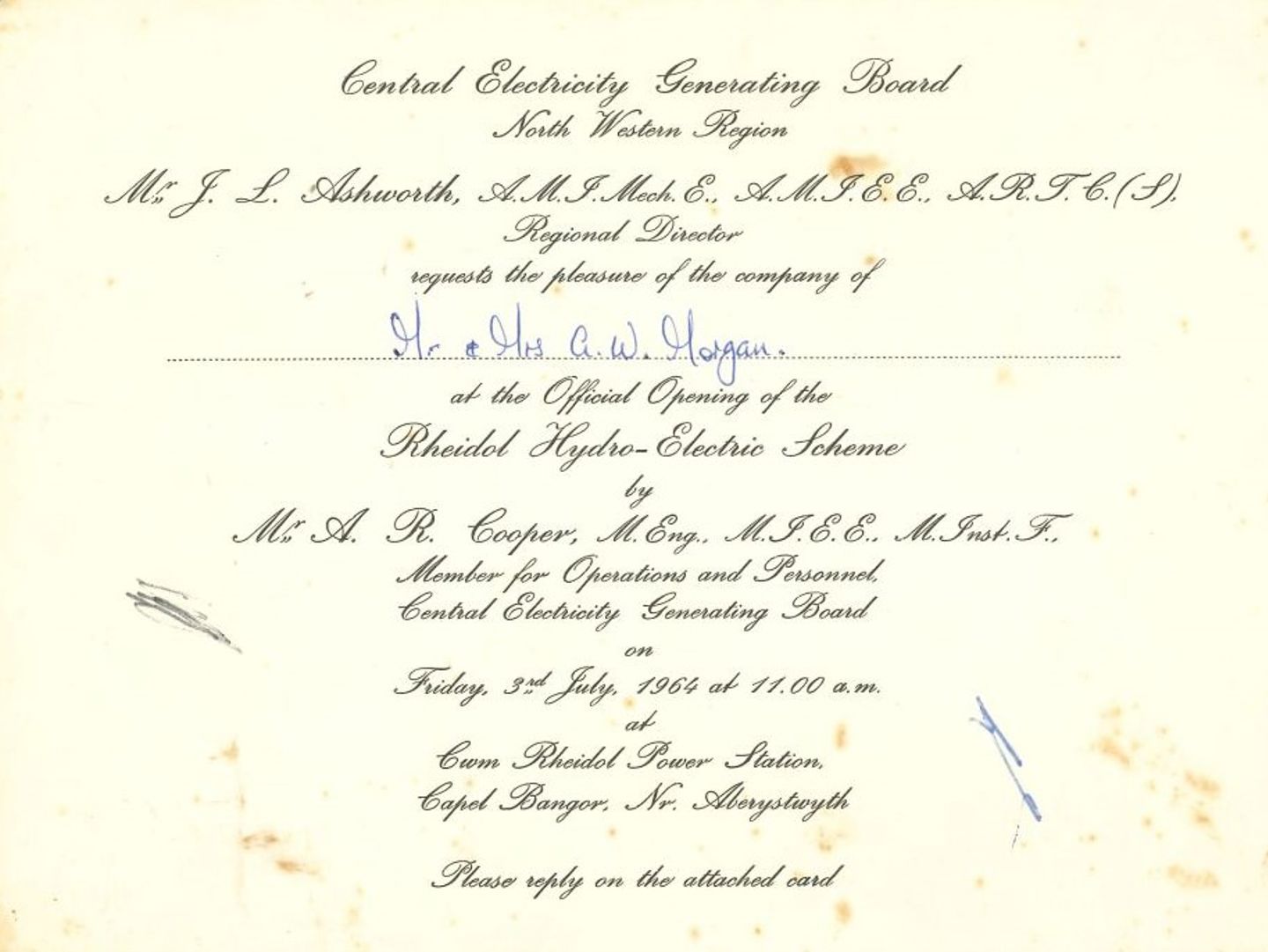
The official Opening Ceremony takes place at 11:00am on Friday 3 July 1964, at Cwm Rheidol Power Station by Andrew Cooper, member of the Central Electricity Generating Board, responsible for operations and personnel.
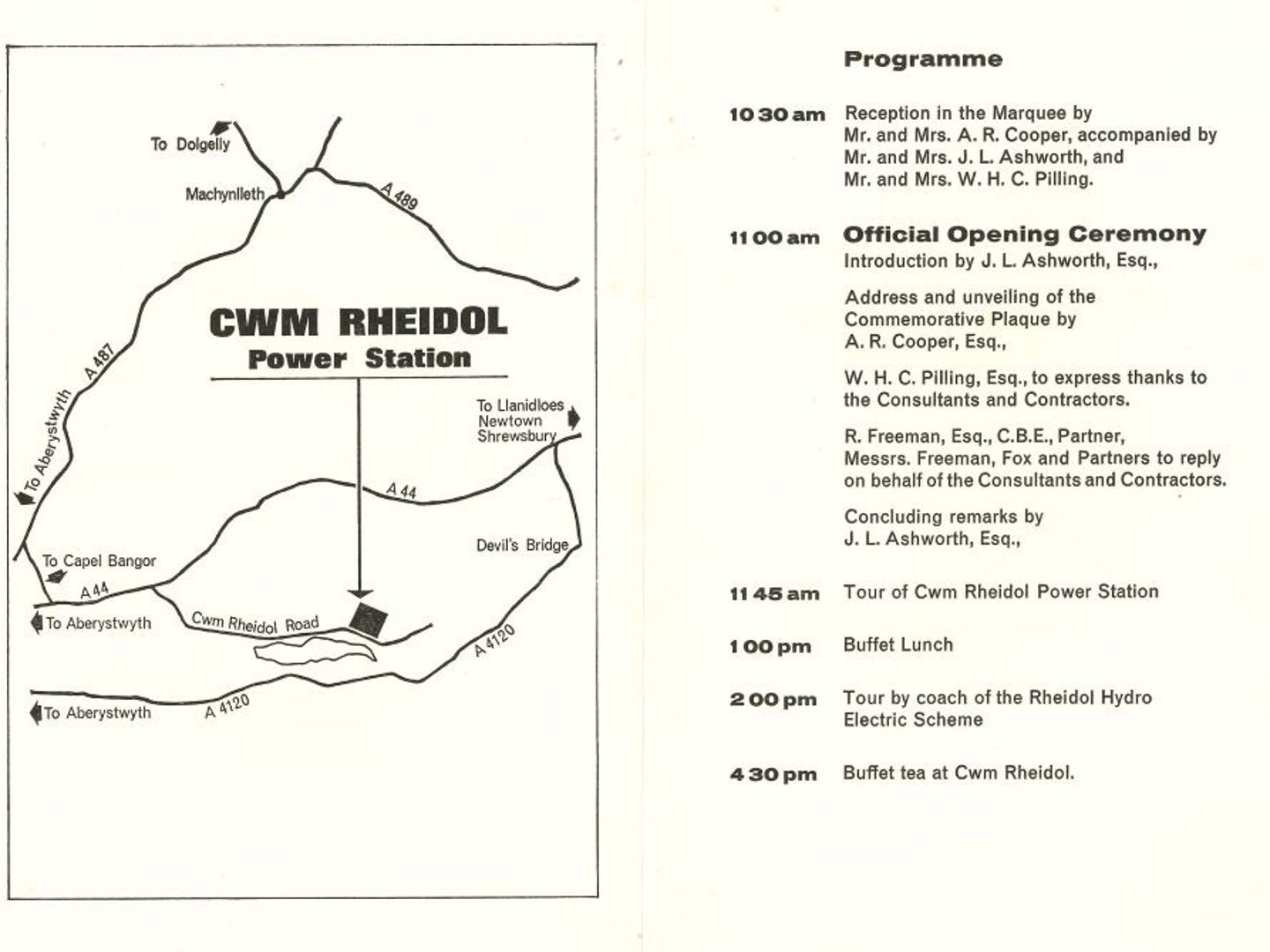
‘Mr Cooper sees to it that the power stations of England and Wales make electricity efficiently and economically’, according to a biography issued to the press. ‘He ensures that the men and women who work in the power stations and on the grid system are effectively employed, and that as an employer, the Central Electricity Generating Board shows a regard for human values.’

Guests at the opening ceremony, which takes place in a marquee adjacent to the main power station are welcomed by two local harpists, dressed in traditional Welsh national costume. Close-circuit television is set up so that the invited dignitaries can watch Dinas power station, some five miles away, switched on remotely.

Two plaques, in English and Welsh, are unveiled remotely at the entrance of Rheidol power station by Andrew Cooper, who operates a switch that draws back a set of curtains.
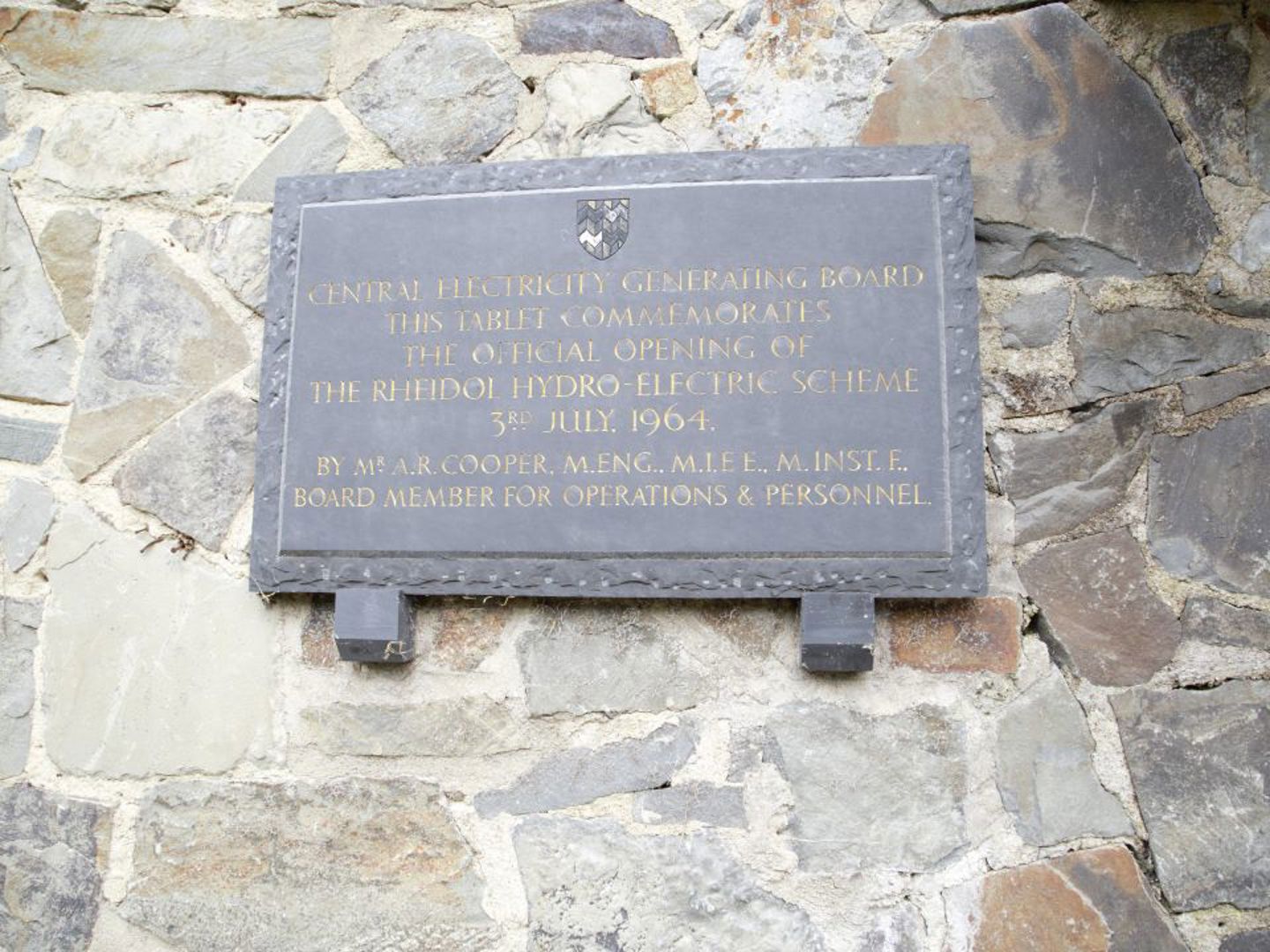
‘We have produced a work of art, by working as partners with the Welsh people, their members of parliament, their local authorities, their architects, their planners and their craftsmen’, says Andrew Cooper in his speech at the opening.
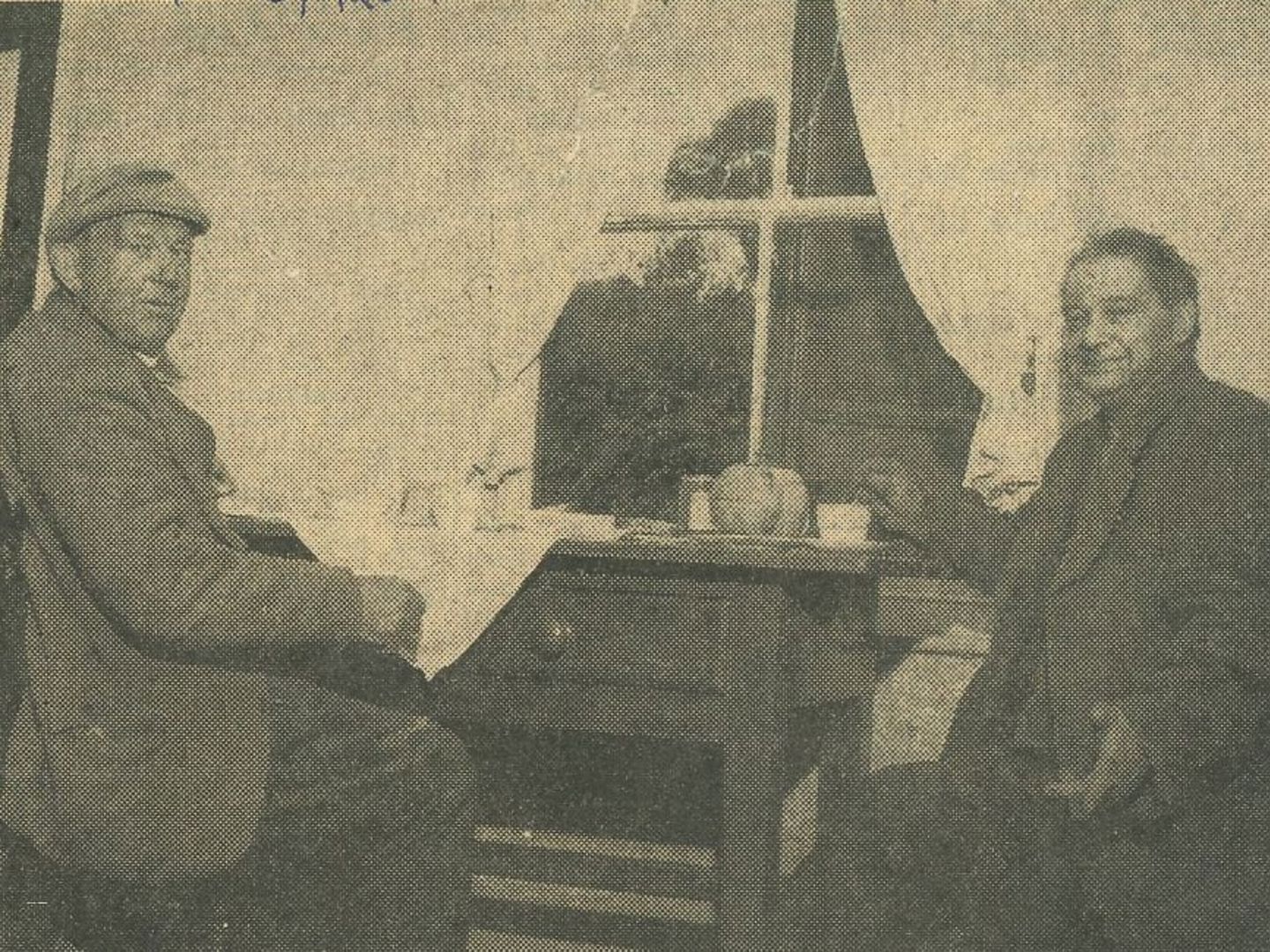
He also remembers the two James brothers – ‘now happily settled in a little cottage near Capel Dewi’.
‘We shall always remember their dignity and unfailing courtesy as the tides of change gradually engulfed their way of life, no bitterness here, no recriminations against authority.’
‘Without being political philosophers, they believed in the greatest good for the greatest number.’
Welcoming visitors
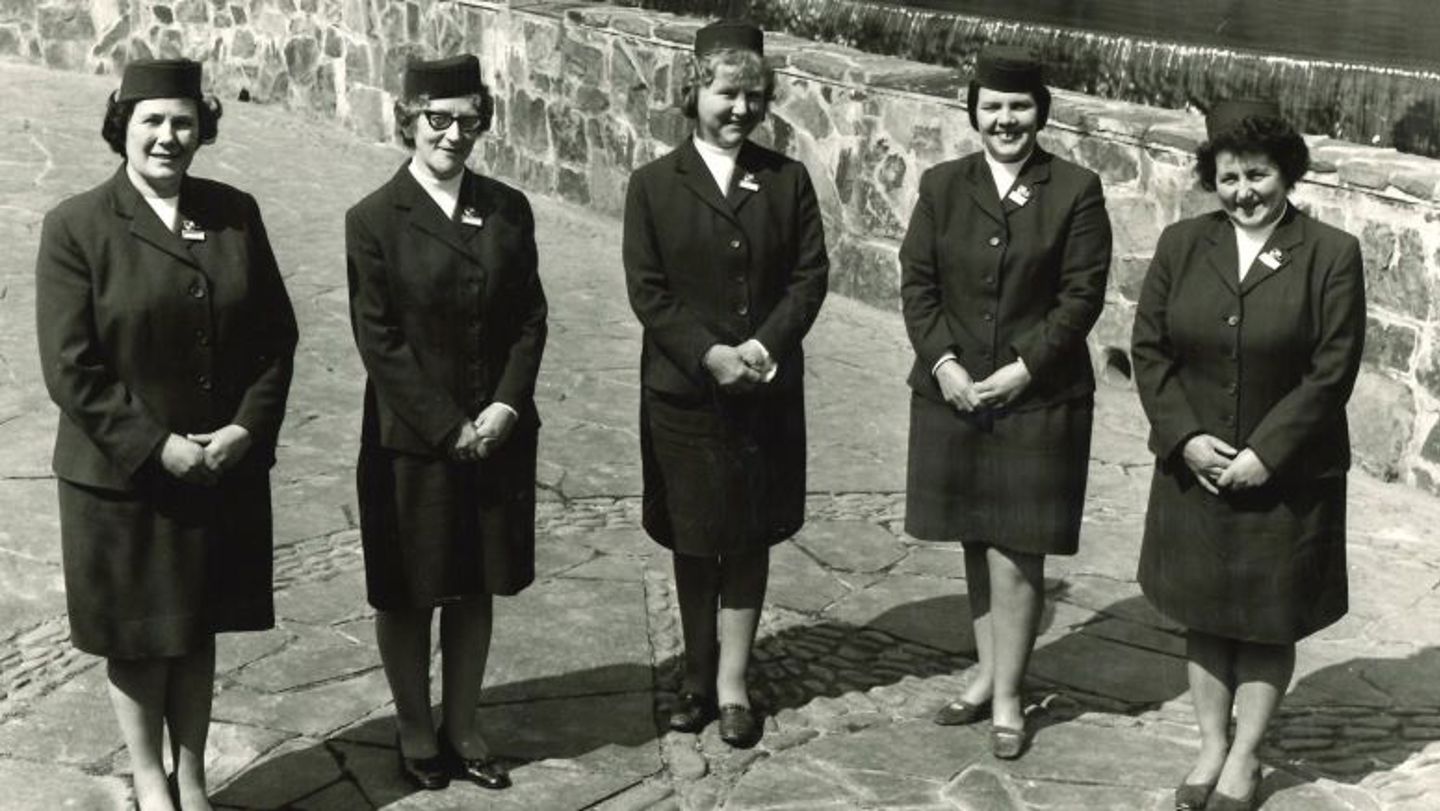
Later in 1964, the main power station throws its doors open to members of the public, who want to learn more about how the scheme works.
William Slater, Rheidol’s Station Superintendent says that ‘visitors need give no warning of their arrival’.
‘As soon as they appear at our front door, they will be welcomed by the receptionists, either Miss Margaret Howells or Miss Marion Holt, and will be invited to sign the station’s visitors’ book.’
‘An engineer will then describe the whole scheme… and take the visitors on a tour of the power station.’
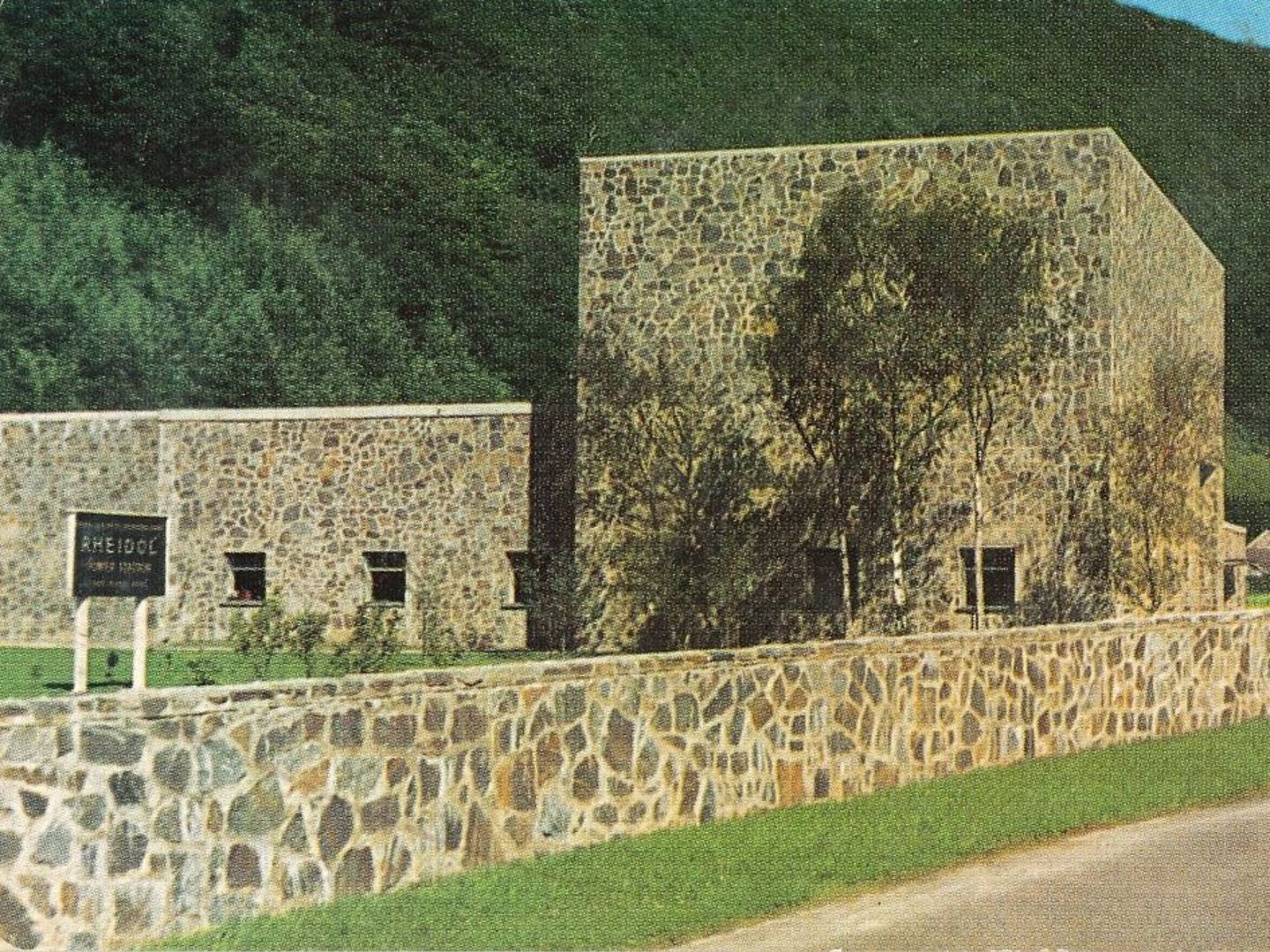
Four years later in 1968, the South Wales Echo describes it as an area once ‘on the brink of death’ that now attracts people in their thousands to take in the scenery and look around the hydro-electric power schemes – ‘a showpiece which has been thrown open to the public, lock, stock, and barrel.’
‘Their scheme is a magnificent example of modern architecture with buildings, dams and plant blending perfectly with the landscape’, writes journalist Richard Marks.
Change is coming
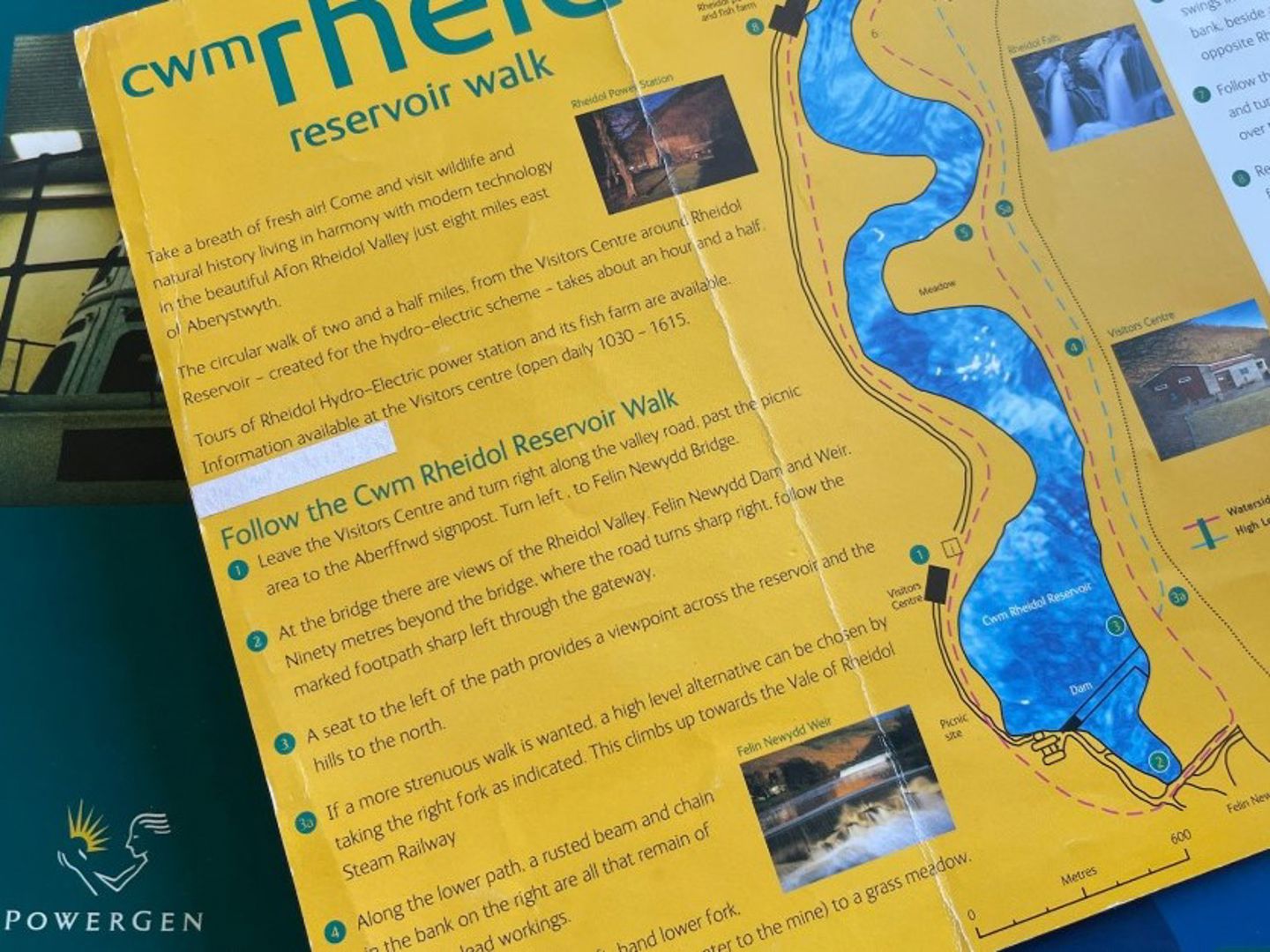
The 1987 Conservative General Election Manifesto sets out the Government’s intention to ‘continue the successful programme of privatisation and commits to 'bring forward proposals for privatising the electricity industry subject to proper regulation'.
Staff at Rheidol are advised they should 'not be drawn into any speculation on how proposed privatisation could be carried out'. The election, held on Thursday 11 June, returns Margaret Thatcher’s party to office, with a majority of 102 seats in the House of Commons.

When the UK’s electricity supply industry is privatised, Rheidol becomes part of PowerGen in February 1990, one of the world’s largest private sector generating companies, providing more than a quarter of the electricity of England and Wales. PowerGen is bought out by Eon in early 2000s.
As part of an asset swap with Eon, Statkraft acquires Rheidol in 2009.
Rheidol today
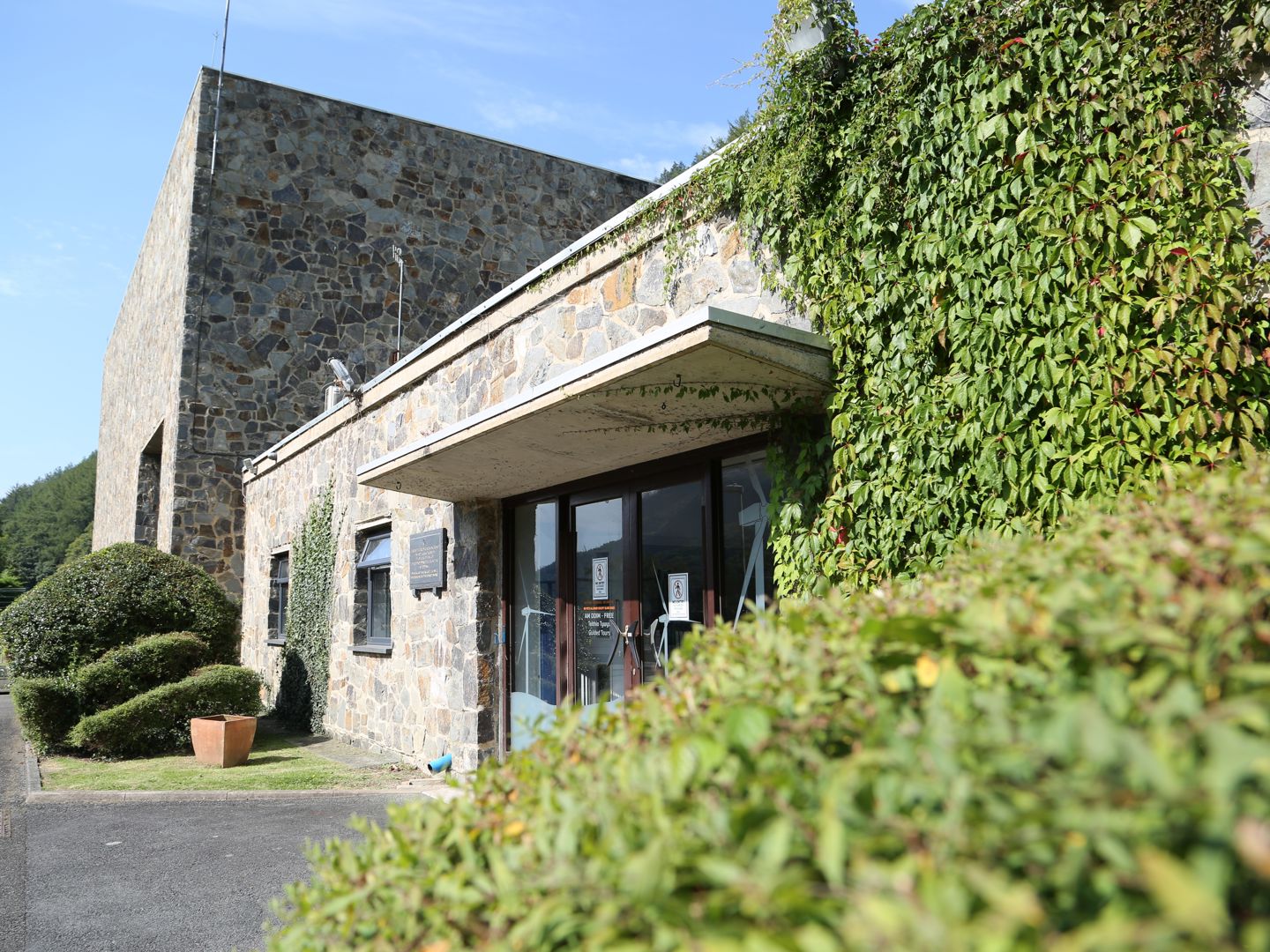
Under Statkraft’s ownership, Rheidol remains a fully operational hydropower plant, but has also evolved and grown to include Statkraft’s UK and Ireland control centre, managing 15 Statkraft renewable projects, monitoring almost 40 wind and solar projects on behalf of third parties.
It also has a significant role in stabilising the electricity grid, and future projects being developed and operated by Statkraft will eventually see the Rheidol Control Centre directing up to 45% of Great Britain’s entire grid stability services.























